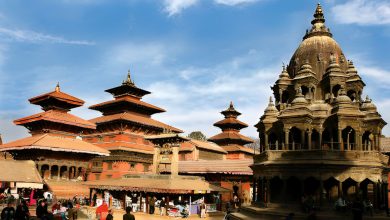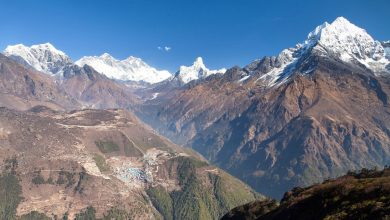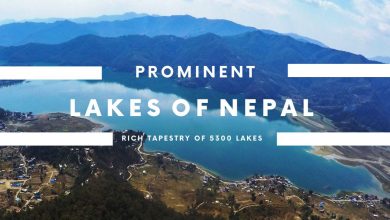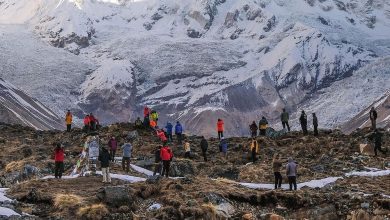Gokyo Lakes
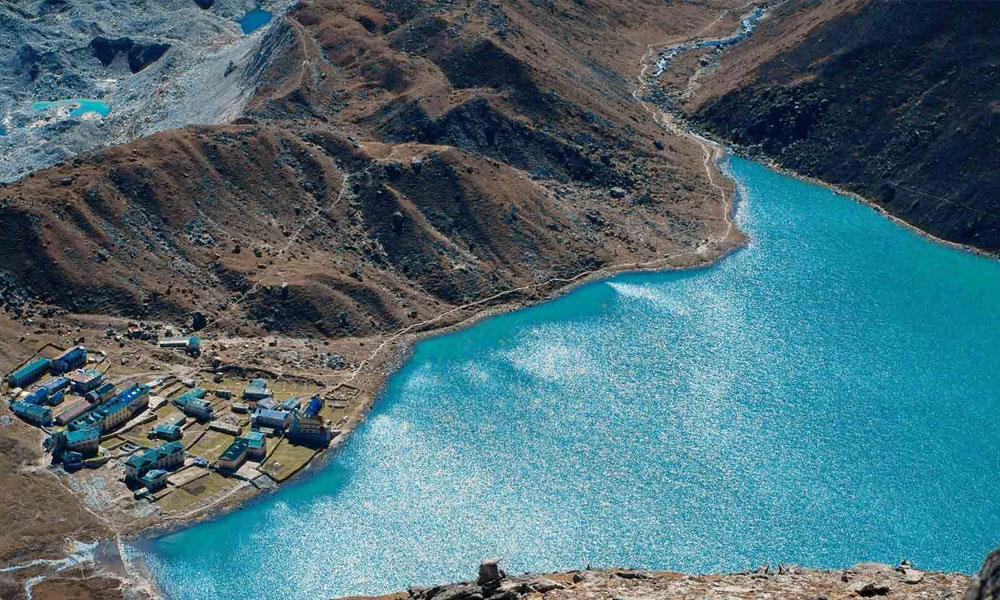
Gokyo Lakes are spectacular turquoise lakes in the beautiful Everest region. They are located in the Khumjung village in the Sagarmatha National Park region of eastern Nepal. Six Gokyo lakes are located at 4,700-5,000 m above sea level.
These lakes are oligotrophic, meaning there are fewer nutrients and, thus, low productivity. However, they also remain crystal clear and are stunning due to this factor. Oligotrophic lakes are common in these extremely cold Himalayas regions.
Moreover, these highest freshwater lakes are a jewel of the Everest region. The Gokyo Cho is the main one of the six lakes. It is widely known as Dudh Pokhari among locals. However, the largest one of the lot is Thonak Lake. These lakes and the surrounding wetlands are also listed as Ramsar sites.
Furthermore, the Gokyo region used to be a yak grazing site. However, you will find a small village settlement in the area now. The Cho Oyu Mountains reside just above the village. There is Mt Everest in the east of the village and Thamserku to the south. Read more to learn about the Gokyo Lake system and other details.
Highlights of the Gokyo Lakes Region
- Incredible views of Mt Everest are even better than the Everest Base Camp
- Short duration to arrive at the destination
- Cultural explorations of the Sherpa heritage, traditions, and lifestyles.
- Staying at local homestays in the region.
- Exploring the incredible lakes and surrounding wetlands
- Climbing the beautiful trekking peak of Gokyo Ri.
- Tasting local Sherpa cuisine and experiencing rural lifestyle.
- Spectacular views of the sunrise and sunsets
The Gokyo Lake System
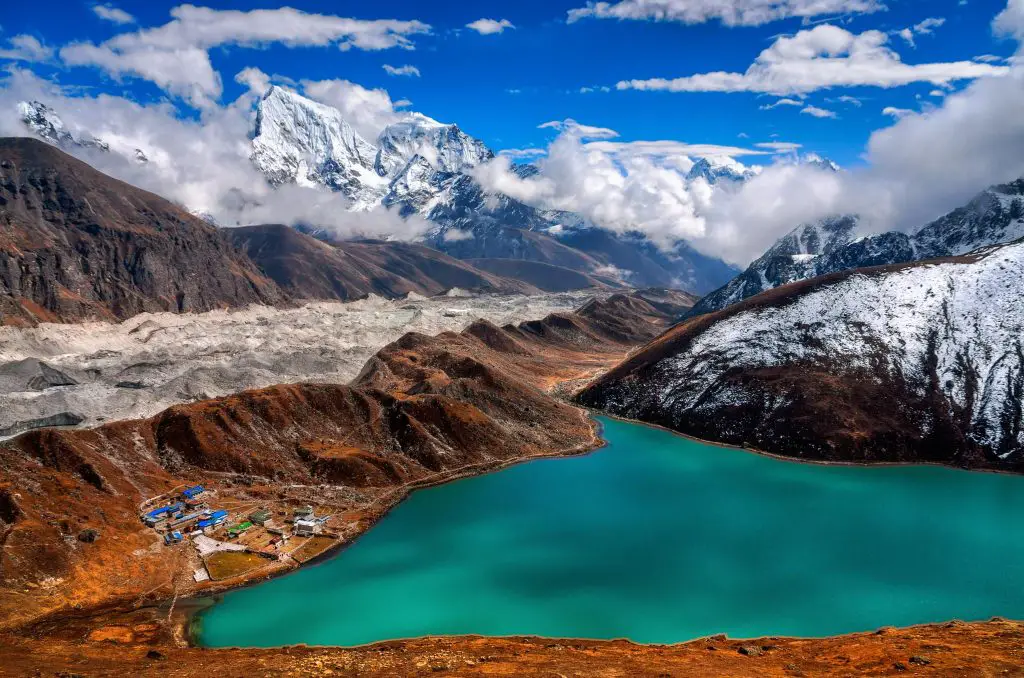
Gokyo Lakes is an oligotrophic lake system located on the premises of the Sagarmatha National Park. Gokyo Cho is the main lake over 42.9 ha (106 acres). It remains in the eastern part and is widely known as Dudh Pokhari.
Moreover, the largest lake is Thonak Cho, spread over 65.07 ha (160.8 acres). The other lakes include Gyazumpa Cho at 29 ha (72 acres), Tanjung Cho at 16.95 ha (41.9 acres), and Ngojumba Cho at 14.39 ha (35.6 acres). These lakes are hydrological as they are permanent high-altitude freshwater lakes.
Furthermore, the lake’s primary water source comes from the seepage of the Ngozumpa glacier. Besides that, streams from the Renjo La Pass and the Ngozumpa glacier on various sides contribute to the lake’s water resource. The total Gokyo Lake remains spread over 196.2 ha (485 acres).
Hence, the lake’s freshwater comes from Himalayan glaciers. Similarly, these lakes release water to the Dudh Kosi River flowing in the region. There are two smaller lakes, namely Taujon Lake and Longabanga Lake, through which they release the water to the Dudh Koshi.
The deepest lake among these Gokyo lakes is the Fourth Lake (Thonak Cho) which has a depth of 62.4 m. The next deepest lake is the Gokyo Cho at 43 m. While the researchers have not found any linkage between these Gokyo lakes, they have concluded on an underground seepage water connection hypothesis.
Another important factor is that the Gokyo Lake system lies ecologically fragile. The Ngozumpa glacier and its outburst are a grave danger to lakes. Hence, it is a naturally vulnerable and unstable zone.
The Religious Significance of the Gokyo Lakes
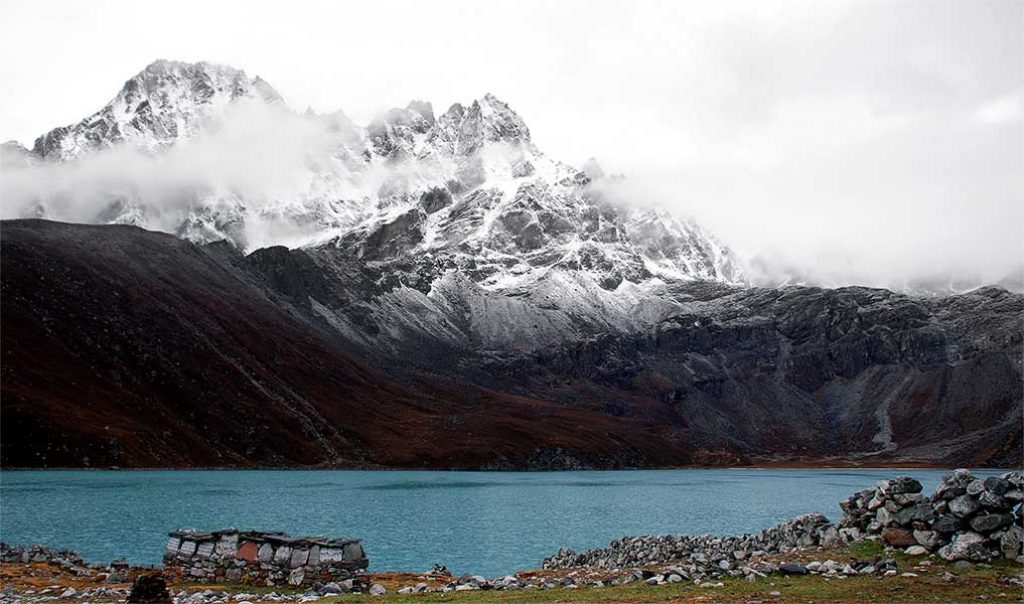
The Gokyo Lakes are an important religious heritage site in the Everest region. There are incredible festivities on Janai Purnima, where Hindus and Buddhist pilgrims gather to dip in the lake’s holy waters. It is generally celebrated in the August month of the Autumn season.
The lake is also widely considered the abode of ‘Nag Devata’ (Snake God). There you can find a temple of Lords Vishnu and Shiva at the western point of the lake. Many of the 7,000 tourists who visit the lake annually are religious pilgrims.
Tourism in the Gokyo Region
The Gokyo region has slowly gained popularity among trekkers in the Everest region. The Everest Base Camp trek and the expedition of Mount Everest opened the gate of tourism in the area. Since then, the Gokyo region has seen a gradual rise in the number of trekkers arriving there.
Trekkers get blessed with the scenic, tranquil beauty of the region. While not as mainstream as the EBC trek, the Gokyo Lake trek is also on the list of avid trekkers. This trek is especially ideal for those trekkers who have already trekked at the Everest Base Camp. These treks can also get included in the EBC trek itinerary.
There is a small settlement at Gokyo village at 4,790 m (15,720 ft), the center of the area. Trekkers can arrive at this village after walking uphill from Namche Bazaar for two days. The trekking concludes after arriving at the the Gokyo Ri summit, the region’s maximum point.
The majestic EBC trek via Gokyo Lakes is also on the cards, when trekkers will trek Gokyo Lakes on their journey to EBC. This trek itinerary gets extended and adds difficulty and excitement to the trip. The Gokyo Lakes trek also allows trekkers to return from a different viewpoint.
Impacts of Tourism on the Gokyo Lakes
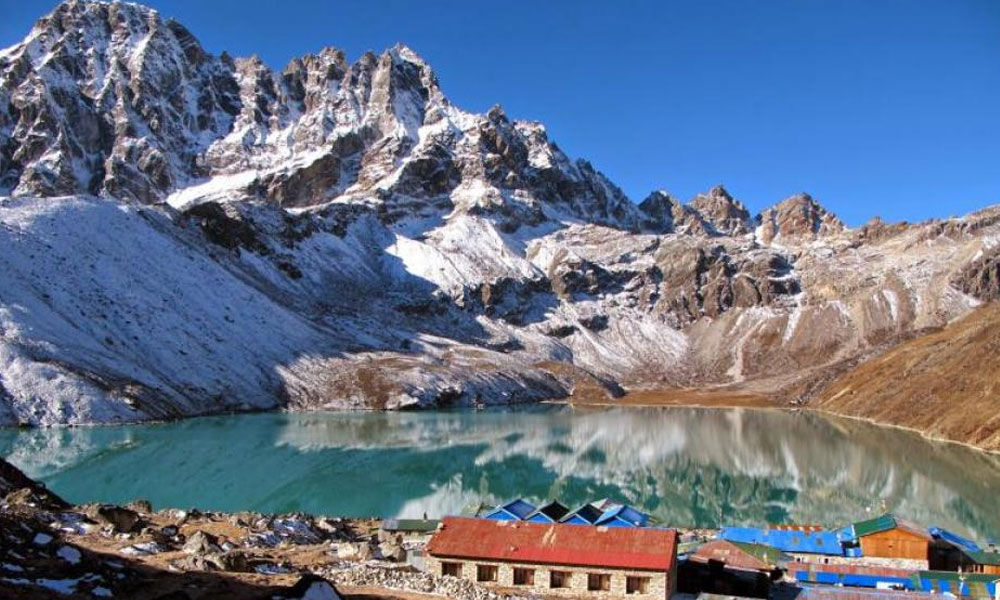
The Gokyo Valley is gaining popularity among tourists and trekkers in the Everest region. However, tourism has impacted the natural, cultural environment of the area. There are tremendous positive impacts, including local employment generation.
However, the mountain ecosystem of the Gokyo region is quite fragile. Therefore the increase in the number of people traveling is degrading the green pastures of the Gokyo Valley into scrubland. There is deforestation and overgrazing which contribute to this aspect as well.
Human waste is another problem in the region as the need for luxury facilities has increased with tourists. The yak herders and farmers have abandoned their ancient occupations and turned to the hospitality business.
An increase in tourism has also led to higher firewood demands which have seen the massive use of local resources for heating. This is quite impactful as the vegetation takes more time to grow in higher altitudes. Ngozumpa is a melting glacier due to global warming. There are adverse effects of climate change throughout the region.
Hence, the Gokyo lakes are expanding, whereas the Ngozumpa Glacier is shrinking. According to an ecological study, the Himalayan ice will melt completely over 30 years. Therefore, these are the various impacts of tourism in the Gokyo region.
Wildlife Around the Gokyo Region
The conservation area status of the region means that the rare and endangered flora and fauna remain protected. The subalpine forests include fir, juniper, birch, and rhododendron trees. These florae get found at 4,000-5,000 m (13,000-16,000 ft).
You can find mosses and lichens above 5,000 m (16,000 ft). There are at least 1,000 floral species, with 208 bird species in the national park. The birds found in the region include the Impeyan pheasant, snowcock, bearded vulture, etc.
Himalayan tahr, snow leopard, serow, and musk deer are generally above 3,500 m (11,500 ft). There are other wild animals in the lower regions as well. The fantastic variety of birds makes their bi-annual trans-Himalayan migrations in the lakes area. Mainly migratory ducks and wood snipes fly from the Tibetan region.
Moreover, there are numerous medicinal and aromatic plant species. The species of plants include Kobresia fissiglumis, which are valuable medicinal plants. Overall, the Gokyo Lakes region is rich in flora and fauna.
When to visit the Gokyo Lakes?
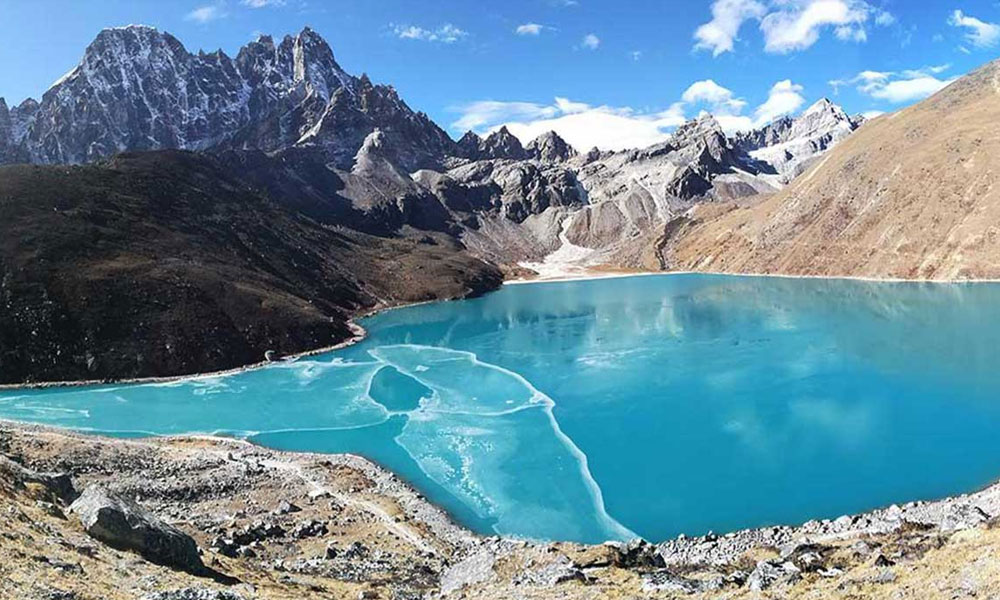
Spring
The Spring season is undoubtedly the perfect time to visit the Gokyo lakes. It would be best if you trekked through challenging uphill terrains before arriving at this tranquil destination.
Hence, it is ideal for trekking in Spring because there is no heavy rainfall and stable weather. There are no risks of landslides and avalanches in this season. You will get to observe turquoise Gokyo Lake in its spectacular form.
There are favorable conditions and trails in this season. And the daytime weather remains perfect for trekking which adds to the advantages of trekking in spring.
Autumn
Similarly, Autumn is ideal for trekking in the beautiful Everest region. The weather remains perfect for trekking in the daytime, and the temperature is moderate. The region has spectacular views of the Gokyo lakes and other snow-clad mountains.
There is no heavy rain as the sky remains clear and blue. The trek will provide spectacular Mount Everest views from Gokyo Ri. You might also experience chilly and unpredictable weather in the latter part of the season.
Offseason
The winter trek to Gokyo Lakes is ideal for observing the lakes in their frozen form. The Gokyo region turns into a beautiful snowy wonderland in the winter. However, it also comes with freezing temperatures and heavy snowfall.
However, if you love to trek and peacefully explore the region, you can choose to visit them in the winter seasons. On the other hand, the summer-monsoon is quite hot, humid, and wet. The trails to arrive at the beautiful destination get heavy rainfall and turn slippery.
Sponges along the route also have a high chance of landslides. Therefore it is best to avoid trekking to Gokyo lakes in the summer monsoon season. Hence, the best time to visit Gokyo Lakes is Spring and Autumn.
How to Arrive at Gokyo Lakes?
Via flight (Gokyo Lakes Trek)
The Gokyo Lakes trek is ideal for arriving at the spectacular Gokyo Lakes. You will reach Lukla after flying for 35-40 minutes. You will then trek through various settlements, including Phakding, and Namche Bazaar, to arrive at Gokyo village. There are also Machermo and Dole settlements that trekkers need to cross.
You can explore the Gokyo lakes and even climb Gokyo Ri. You can either trek directly to Gokyo Lakes as your primary destination. However, you can also reach the base camp through the Gokyo Lakes route. The Everest Base Camp trek extends around four days through the Gokyo lakes.
Via helicopter trip
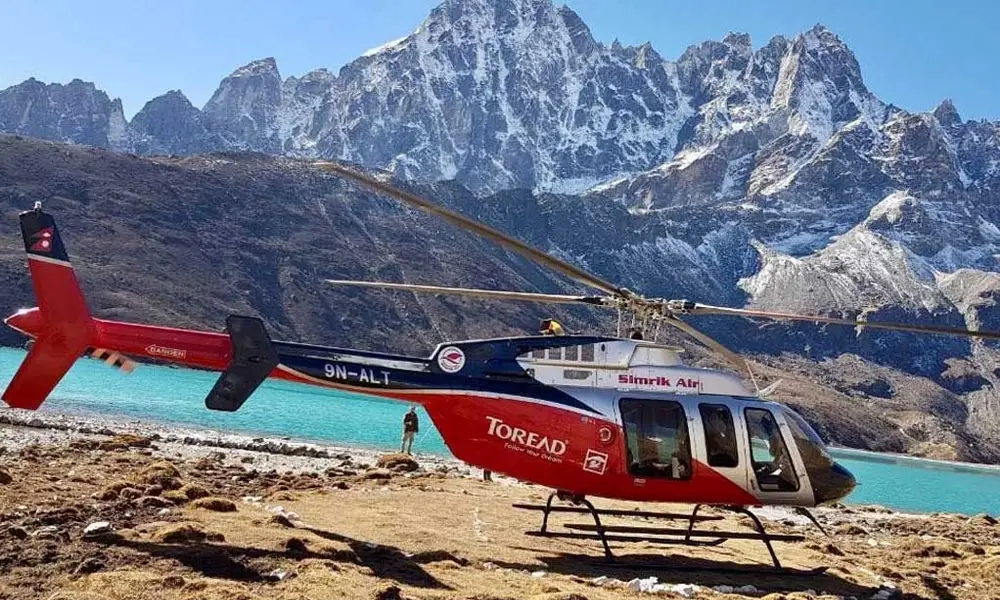
The other way to arrive at the serene Gokyo lakes is by helicopter trip. The scenic helicopter trip will take 35-40 minutes to arrive from Kathmandu to Lukla and then 15 minutes to reach Gokyo Lakes. The helicopter trip provides you with scenic views of the snow-capped mountains.
The region has incredible natural and diverse terrains, including green hills, waterfalls, streams, rivers, and others, providing you with a great adventure. You can also trek to Gokyo but take the luxurious return on a helicopter. Besides that, there are various other points where you can arrive on a helicopter and walk your path to Gokyo.
Via Jiri
There are other ways to arrive at Gokyo Lakes as well. You can arrive at the Jiri village settlements from Kathmandu on a bus. And then, you can trek through the challenging terrains to reach Lukla. From Lukla, you will walk through the various settlements from Namche, Machermo, and Dole to arrive at Gokyo Lakes.
How Hard Is it to Reach Gokyo Lakes?
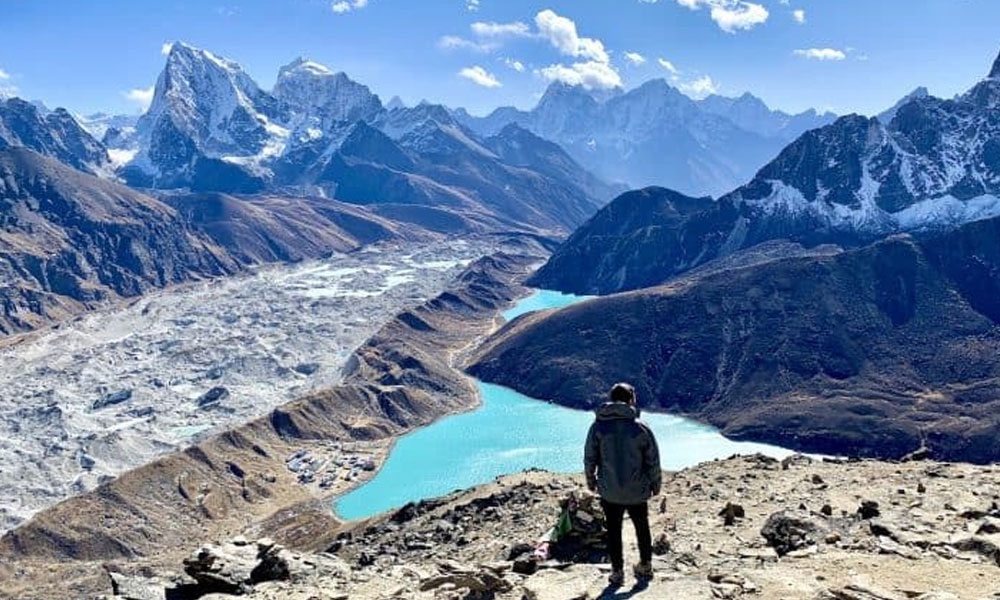
Gokyo lakes remain located on challenging terrain in the High Himalayan region. Hence, there are various challenges to arriving at the destination of Gokyo Lakes. The various difficulties that you need to tackle during the trek are as follows:
Duration
The total duration to arrive at Gokyo Lakes is a difficult factor. The general itinerary to arrive at these beautiful destinations is around 5-6 days, whereas the total trek takes approximately 12 days.
However, you can add days for acclimatization and exploration or reduce them to complete your tour fast. The trek each day is around 5 to 6 hours while covering 8-10 km. These are moderately challenging conditions for trekkers. It can be strenuous for those trekkers who have not trekked in the region before.
Also, proper trekking gear, including boots, clothes, pants, and king jackets, will provide a comfortable trekking experience. Since long walks can be a challenge, you should regularly rest well in the middle and hydrate. Hence, you can customize your trip to Gokyo Lakes according to your desire and capabilities.
Altitude Sickness
Altitude Sickness is quite common in the high-altitude Gokyo region and its trekkers. The trekkers will not have time to adapt to the changing high-altitude conditions. There are numerous methods to tackle altitude sickness, which include acclimatization.
You will trek from 1400 m and reach an altitude of 5357 m above sea level. Oxygen level is low, and air pressure is less in the high altitude region. You can observe various symptoms along the trail, including nausea, headache, loss of sleep, appetite, etc. You can descend to lower altitudes and even abandon the trek if necessary.
The various ways to tackle altitude sickness include:
- Trek gently at a slow, gentle pace
- Do not gain more than 1000 ft in a trekking day
- Hydrate regularly during the trek
- Increase your food intake in the high altitude
- Consult your doctor if you take regular medications
Challenging and remote trails
The Gokyo Lakes trek passes through some of the most challenging trails. Trekkers will need to cover around 90 km in this trek starting from Lukla. The tracks require you to remain physically and mentally fit to complete the trek easily.
There are narrow trails with uphill terrains. The routes get slippery and challenging after heavy rainfall or snowfall. Other natural diversities like mountain passes, cliffs, valleys, pasturelands, waterfalls, rivers, etc. You need to traverse through these regions to arrive at your destination.
Training
This trek requires proper training for both amateurs and experienced trekkers. The incredible routes of this trek offer great adventure in the wilderness. Various incredibly challenging trails require both physical fitness as well as mental stability.
However, you don’t require a harsh training regime. A basic training regime with strength and endurance training, and other activities like stretching, swimming, and running, are ideal. These activities will increase your flexibility along the trail and improve your breathing capabilities. A positive mind is also required for the trek, as it will keep you motivated.
You may also like the following:
The Final Say
Gokyo Lakes are beautiful natural lakes in the Sagarmatha National Park region. The beautiful Gokyo lakes provide you with the best adventure and exploration opportunities. These high-altitude lakes are at around 4,700-5,000 m above sea level.
These oligotrophic lakes are spectacular and among the world’s highest freshwater lakes. Gokyo Cho is the main one visited by most pilgrims and travelers. Thonak Lake is the largest one of the lot. Overall, Gokyo Lake is a spectacular jewel of the region.
